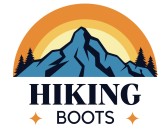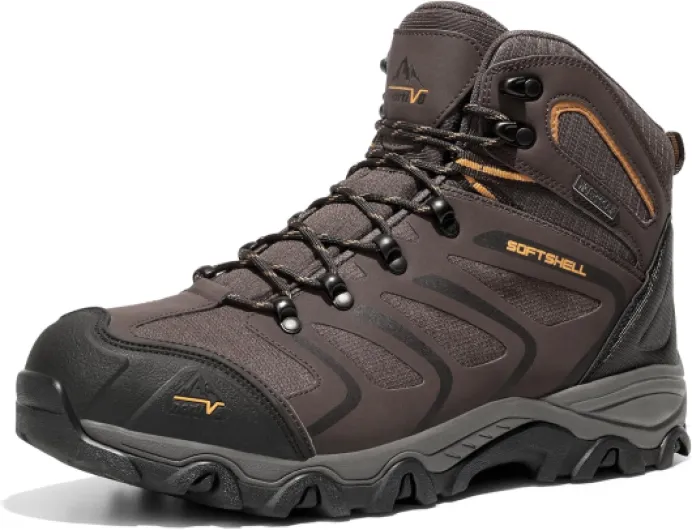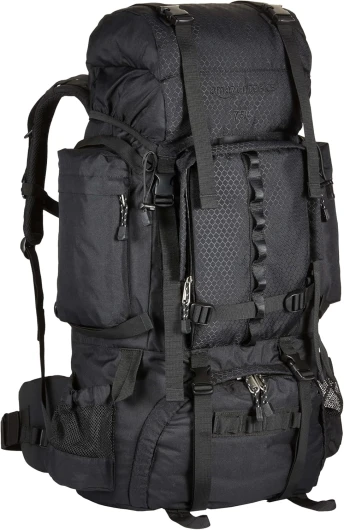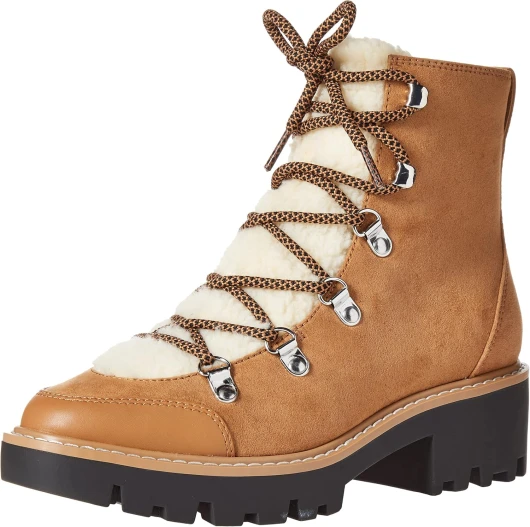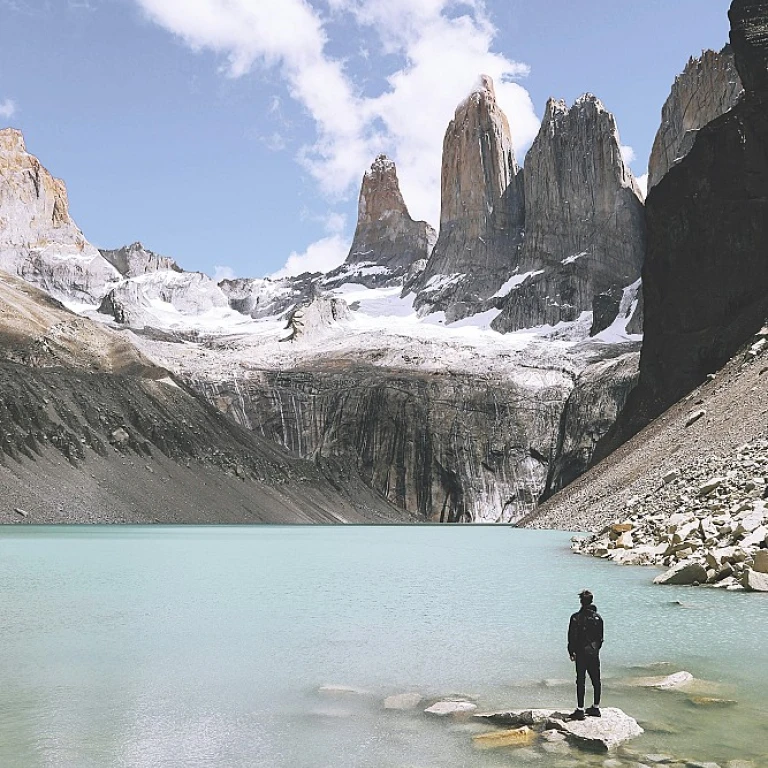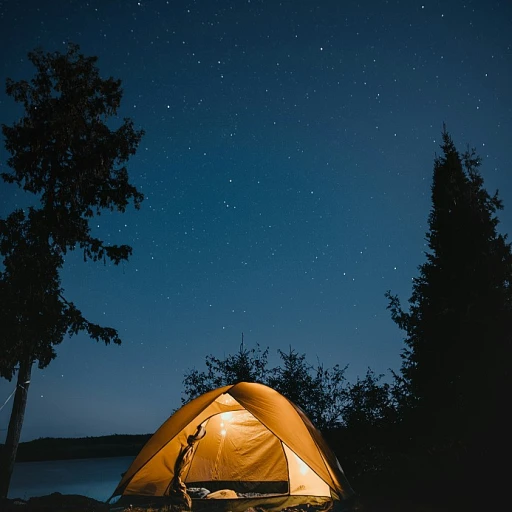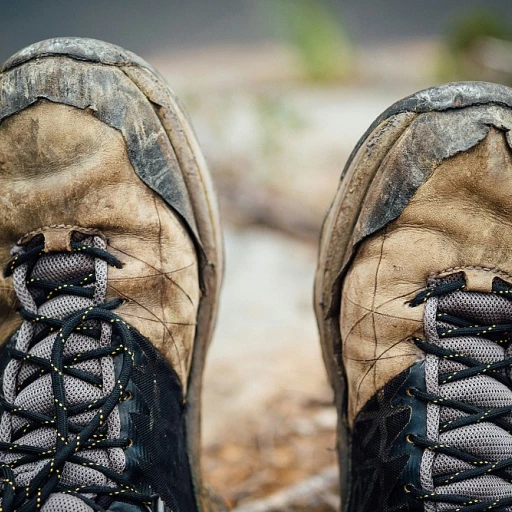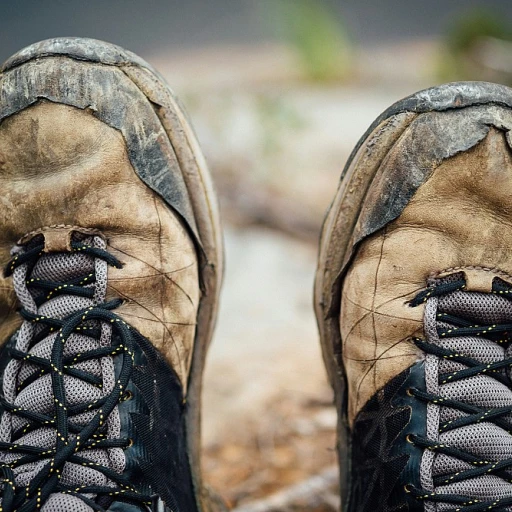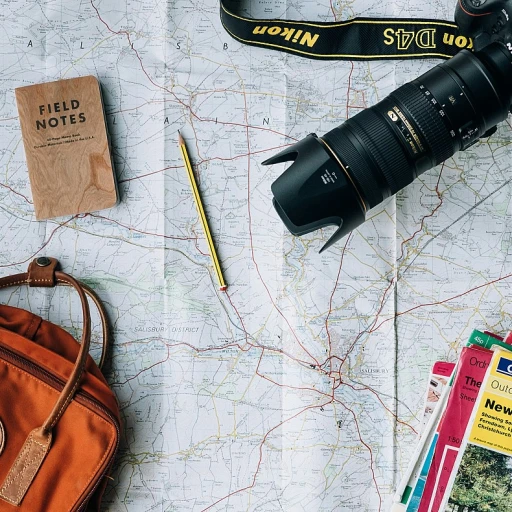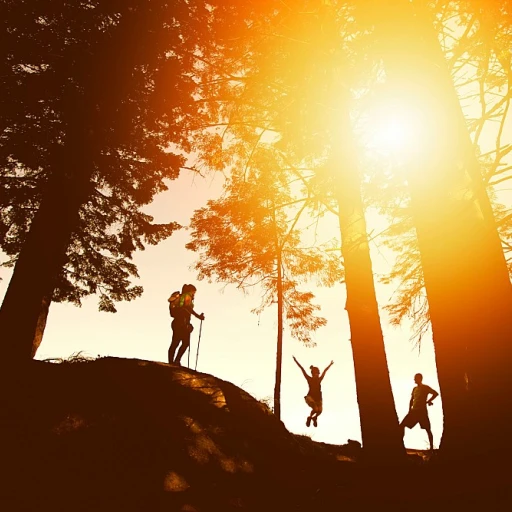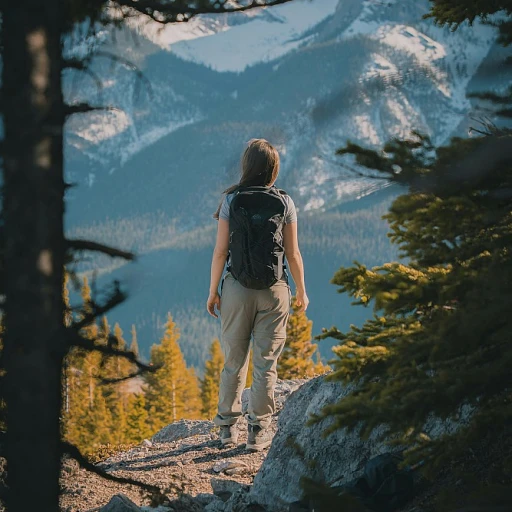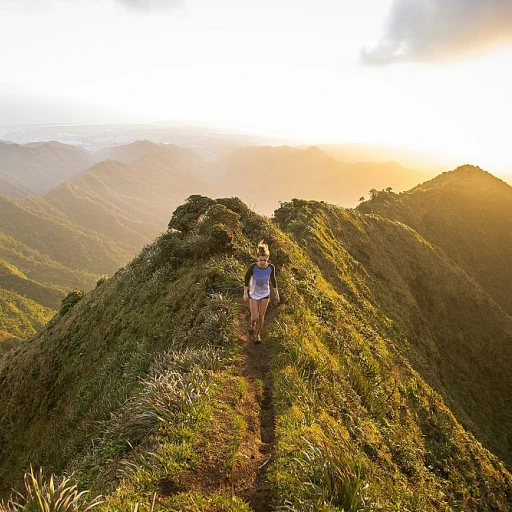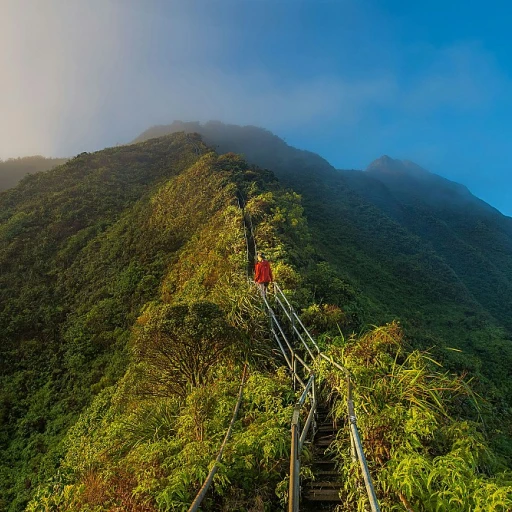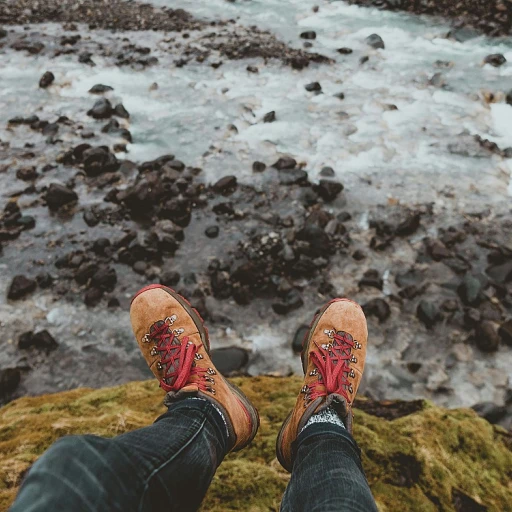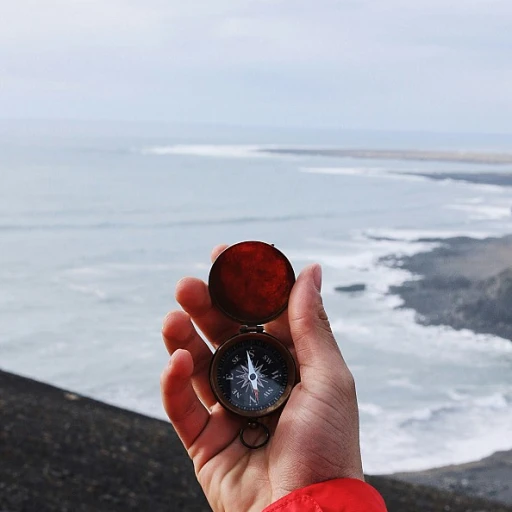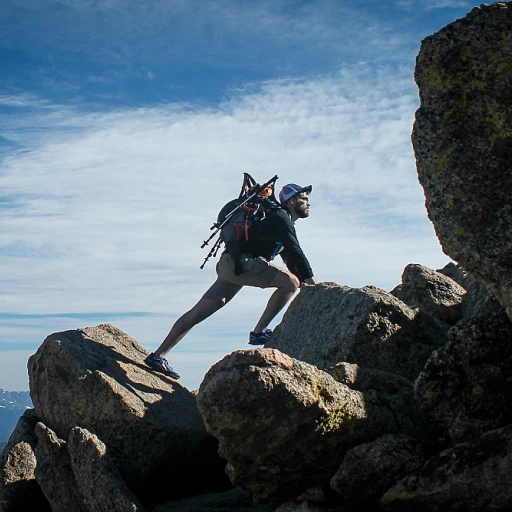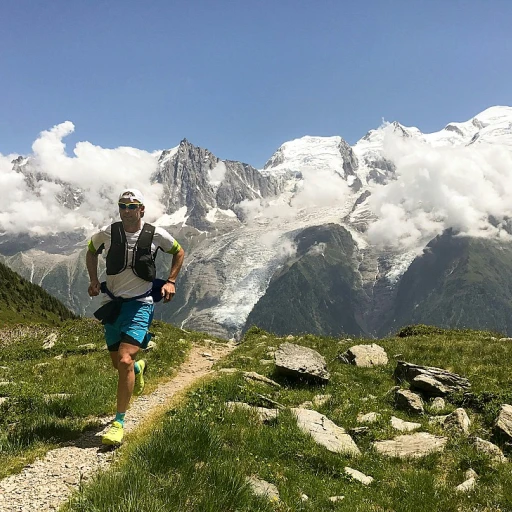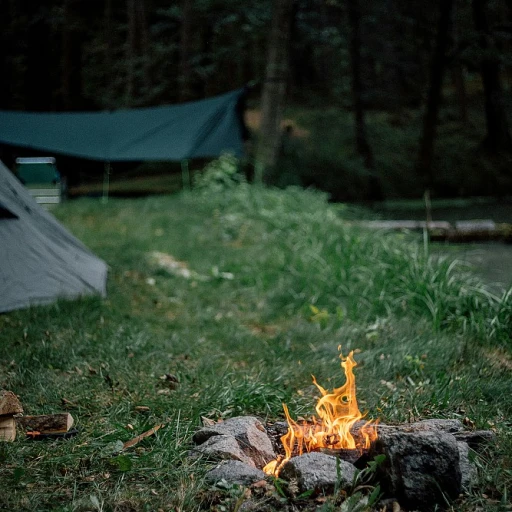
The basics: what is the difference between backpacking and hiking?
Understanding the basic concepts
Backpacking and hiking might seem synonymous at first glance, but they hold distinct identities within the adventure travel space. Hiking generally refers to short walks in natural surroundings, often completed within a day. Conversely, backpacking involves an extended journey, typically over multiple days, with campers carrying their gear, including a bear canister for food storage, a sleeping bag, and a tent.
According to the Sierra Club, hiking is a major physical and mental health booster, making it a popular choice for those looking to escape their daily routine and engage in physical activity. Meanwhile, backpacking involves more extensive planning, packing, and preparation, as it demands living out of one's backpack over long distances and varying terrain.
Historical roots and evolution
The distinction between hiking and backpacking goes back years ago. Hiking trails have been a part of human history for centuries, with famous routes like the Appalachian Trail in the USA, which was first proposed in 1921 by Benton MacKaye. On the other hand, backpacking became more popular in the mid-20th century as a leisure activity when people started venturing into remote wilderness areas seeking longer adventures.
Activity duration and accessibility
One key difference is the amount of time each activity usually takes. Day hikes typically last a few hours or an entire day and are accessible to a wider range of people due to the minimal preparation needed and shorter distance covered. Examples of amazing day hikes include trails within Yosemite National Park and Scotland's West Highland Way. In contrast, backpacking trips can span multiple days to weeks, as seen on the challenging Pacific Crest Trail or adventurous treks through North America's Rockies.
Gear essentials: what you need for hiking and backpacking
Packs, boots, and beyond - essential equipment
In the neverending debate of backpacking vs hiking, the gear you need plays a crucial role in differentiating the two. When it comes to hiking, it’s often about keeping things light and simple. A day hike (bear canister for your hikes notwithstanding) usually requires just the basics: hiking shoes or boots, a lightweight backpack, water, snacks, a compass or GPS, and perhaps a rain jacket depending on the weather.
Backpacking, however, calls for a more extensive preparation. Since it involves multi-day trips, backpackers need to equip themselves with everything they might need over several days. Think along the lines of a sleeping bag, tent, cooking supplies, clothes for various conditions, and food to sustain you over multiple days. Additionally, you’ll need a more durable and larger backpack to carry all these essentials. The pack weight becomes a significant factor here. According to BackPacker Magazine, the average backpacking pack should weigh no more than 20% of your body weight, yet this varies with experience and terrain (source).
Clothing essentials
Hikers also need to consider what they wear, but there’s a bit of difference between the needs of a hiker and those of a backpacker. For a day hike, for instance, hikers might opt for more breathable and flexible clothing. Items like moisture-wicking shirts, convertible hiking pants, and a reliable pair of hiking boots are typical. A 2018 survey by Outdoor Foundation highlighted that 85% of hikers consider their hiking boots as the most crucial part of their gear (source).
In contrast, backpacking attire needs to prepare you for long distance trails and various weather conditions. Backpackers often layer their clothing, starting with a moisture-wicking base layer, followed by insulating layers, and topped with a waterproof and windproof outer shell. This system allows for adaptability as temperatures and conditions change throughout the trip. Practical clothing like zip-off pants, which can convert to shorts, are common among backpackers for their versatility. The Sierra Club often advises its members to follow the layering principle when preparing for a backpacking trip (source).
Footwear
One debate that never seems to die in the hiking community is whether to wear boots or shoes. Both have their merits. Hiking boots provide more ankle support and protection, which is particularly useful on rocky or uneven terrains. On the flip side, running shoes or hiking shoes are lighter and can often offer more comfort over regular, flat trails. However, a study by REI Co-op reveals that around 60% of experienced hikers prefer traditional hiking boots over shoes, citing the added stability and durability as key reasons (source).
Backpackers, facing heavier loads, often lean towards more robust footwear. The choice of shoes is critical as they need to handle both weight and varied terrains. A sturdy pair of boots that offer good ankle support and have a durable, grippy sole are essential. The Pacific Crest Trail Association recommends that hikers ensure their footwear can withstand the rigors of long-distance hiking, stressing that comfort, support, and durability are key attributes to look for (source).
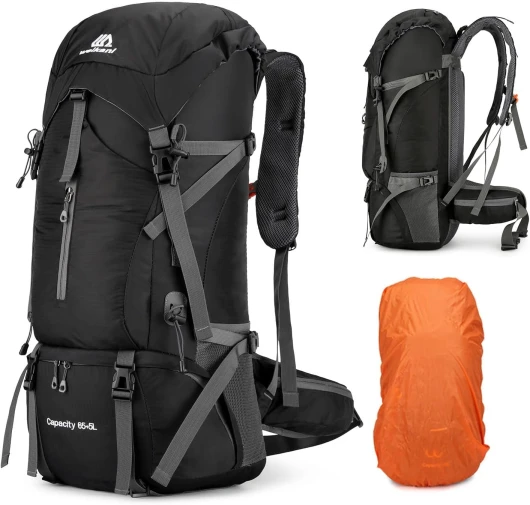
- + Large Capacity: 70L for plenty of storage
- + Lightweight Design: Easy to carry
- + Foldable & Packable: Convenient for travel
- + Includes Rain Cover: Protects from wet weather
- + Unisex Design: Suitable for both men and women
Fitness and preparation: physical demands of backpacking vs hiking
Fitness levels and training for the trails
Whether you're new to the trails or a seasoned vet, understanding the physical demands of hiking and backpacking is essential. You'll find that the requirements for each can vary significantly.
How hiking keeps you on your toes
In a nutshell, hiking is all about covering shorter distances, often on well-marked paths. It's accessible, even for folks who aren't in peak physical condition. According to the American Hiking Society, over 60 million Americans engage in day hiking, making it one of the most popular outdoor activities in the U.S. Generally, you'll need a good pair of hiking boots, a comfortable day pack, some snacks, and plenty of water. Your average day hike might cover 5-10 miles, depending on the trail difficulty and your fitness level.
Backpacking: the long haul
Backpacking, on the other hand, demands a lot more from your body. You're not just hiking; you're also carrying all your gear for multiple days. A study by the American Council on Exercise found that backpacking can burn between 480 to 720 calories per hour, depending on factors like pack weight and terrain. You'll need to prepare your body for carrying a heavier pack, often weighing 30-50 pounds, over long distances of 15-20 miles per day.
Gearing up for success
For both activities, training is crucial. Many experts, including those from the Sierra Club, recommend incorporating cardiovascular and strength training into your routine. Hiking-specific exercises like stair climbing, lunges, and weighted hikes can make a significant difference. Nutrition and hydration play a vital role too. Wendy Weitzel, a seasoned backpacker and nutritionist, emphasizes, "Your body is your engine, and food and water are your fuel. Pay attention to what you consume before, during, and after your hike."
Real-world case studies
Take, for example, the Pacific Crest Trail, which demands rigorous physical preparation. Hikers often train for months before embarking on this 2,650-mile journey. On the flip side, a day hike in Yosemite National Park's Mist Trail is accessible to most with moderate fitness levels, covering only about seven miles round-trip but providing breathtaking views.
Find your flow
Ultimately, whether you’re taking a leisurely day hike or tackling a multi-day backpacking route, the key is to listen to your body and prepare accordingly. As with any adventure, the more you know and the better you train, the more you'll enjoy your time on the trails.
Case studies: famous hiking and backpacking trails
Iconic trails around the world
Exploring iconic trails across continents is one of the ultimate ways to experience nature's raw beauty and challenge your limits. From short day hikes to multi-day treks, every path offers a different story and adventure.
The pacific crest trail
Stretching over 2,650 miles from California to Washington, the Pacific Crest Trail (PCT) is often regarded as a bucket-list endeavor for backpackers. This long-distance trail traverses through some of the most stunning landscapes in North America, including deserts, forests, and mountain ranges. According to the Sierra Club, around 5,000 people attempt this trail each year, with only half successfully completing it.
Amy Racina, a seasoned backpacker, shared her experience: “You have to be mentally and physically prepared for the unexpected. I had encounters with wildlife and faced severe weather conditions, but the sense of accomplishment upon completing it is unparalleled.”
The appalachian trail
The Appalachian Trail (AT) offers a 2,190-mile trek from Georgia to Maine. With an estimated 3 million visitors annually, it's one of the most popular hiking trails in North America. According to the Appalachian Trail Conservancy, approximately 20,000 people have completed the entire trail since its inception in 1937.
Matthew Kirk, known as “Stringbean” in the hiking community, set a record for the fastest self-supported thru-hike of the AT, completing it in just 52 days. He emphasizes the importance of preparation and endurance: “It's not just about walking; it's about adapting, surviving, and thriving in ever-changing environments and conditions.”
The himalayan trails in nepal
Nepal boasts some of the most challenging and breathtaking trails. The Annapurna Circuit and the Everest Base Camp Trek attract thousands of trekkers annually. These trails test one's physical and mental limits but reward hikers with mesmerizing views of the Himalayas.
Renowned mountaineer Nirmal Purja recently highlighted the growing popularity of these trails and their impact on local communities. “Tourism from trekking helps sustain local economies. It's crucial for trekkers to respect the environment and local cultures,” he mentioned in a recent interview.
The camino de santiago in europe
A different kind of adventure awaits on the Camino de Santiago in Spain. This pilgrimage route offers various paths, the most popular being the Camino Francés, which extends about 500 miles. While not as rugged as the PCT or AT, it requires considerable stamina and is culturally enriching.
Hiker John Brierly notes, “Walking the Camino is a spiritual journey as much as it is a physical one. You meet people from all over the world, each with their own stories and reasons for walking.”
The great barrier reef walk in australia
The Thorsborne Trail on Hinchinbrook Island offers a different landscape, featuring lush rainforests and coastal scenery. This 20-mile trail may be shorter, but it is no less stunning. Given its location, it provides a unique perspective on Australia's natural beauty and biodiversity.
Expert guide Samantha Clark shared, “Australia's trails, from the Larapinta Trail to the Overland Track, offer something for every type of adventurer, but always remember to pack appropriately and respect the natural habitat.”
Local treasures
While these iconic trails are a dream for many, don't overlook local gems. Exploring hidden trails near you can offer less crowded, equally fulfilling adventures. Check out our partner article for some hidden gems for hiking enthusiasts. These shorter hikes provide a quick escape and a wonderful way to stay active and connected with nature.
Expert insights: tips from seasoned hikers and backpackers
Wisdom from seasoned explorers
When it comes to getting advice, you can’t go wrong by listening to those who have put in the miles and carried the packs. Here, we’ve gathered insights from some of the most experienced hikers and backpackers around the world.
Chris Townsend, a renowned UK hiker and author, emphasizes the importance of planning. He says, “One of the best things you can do is thoroughly plan your trips. Know the trail conditions, weather forecasts, and ensure your gear is suitable for the adventure.” This advice is echoed by many experienced explorers who vouch for the value of being prepared for both day hikes and multi-day backpacking trips.
Jennifer Pharr Davis, who set the fastest known time on the Appalachian Trail in 2011, shares her thoughts on physical readiness: “Your body will adapt to the demands of the trail over time. It’s important to start at a pace and difficulty level that matches your current fitness and gradually increase the challenge.” This piece of wisdom is particularly meaningful for those embarking on long-distance trails.
Andrew Skurka, an accomplished backpacker and adventurer, talks about the significance of lightweight gear: “In my experience, lighter gear can transform your hiking and backpacking experience. It reduces fatigue and allows you to cover more ground comfortably. Focus on reducing your pack weight without compromising on safety and essential items.” Andrew’s advice rings true for anyone looking to take on extended hikes or multi-day adventures.
Choosing the right footwear
The seasoned pros often have strong opinions about footwear. Heather Anderson, an elite hiker who completed the triple crown of hiking (Appalachian Trail, Pacific Crest Trail, and Continental Divide Trail), says, “Investing in good quality hiking boots or trail running shoes is crucial. They should provide support, durability, and comfort to prevent injuries and blisters.” Many hikers find that boots designed specifically for their needs, whether hiking or backpacking, make a significant difference in their experience.
Balancing nutrition and hydration
Experienced backpackers like Ray Jardine stress the importance of nutrition and hydration. According to Jardine, “Carrying the right type of food and staying hydrated can make or break your trip. Focus on high-energy, lightweight foods that are easy to prepare. And never underestimate the importance of water.” This advice is vital, whether you’re facing a day hike or a week-long journey into the remote wilderness.
These experts' insights can help guide you on your hiking and backpacking adventures, providing practical tips that can enhance your experiences on the trails. Listen to the wisdom of those who have been there and done that to make your own adventures successful and enjoyable.
Trends in hiking and backpacking: what's popular now
Rising popularity of long-distance trails
There's been a noticeable shift towards completing long-distance trails, sparked in part by trail stories that have captured imaginations worldwide. The Pacific Crest Trail (PCT) and the Appalachian Trail (AT) have seen a surge of hikers and backpackers alike. In 2022, the Pacific Crest Trail Association reported over 7,300 long-distance permits issued, a steep increase from previous years.
Long-distance trails are not only catching on in North America but also in Europe and Australia. Germany's Rennsteig Trail and the Te Araroa in New Zealand have also seen growing numbers of outdoor enthusiasts.
Ultralight backpacking gear
A significant trend is the shift toward ultralight backpacking gear. Hikers are seeking to minimize pack weight without sacrificing comfort. According to a 2021 survey by the Sierra Club, 60% of backpackers prefer gear that weighs less, investing in high-tech, durable materials.
Rise in remote wilderness adventures
Adventurers are increasingly drawn to remote wilderness areas. This trend has flourished post-pandemic as people seek solitude and a break from urban life. A report from the Bureau of Land Management (BLM) noted a 25% increase in permits for areas such as the John Muir Wilderness and Yosemite National Park.
Technology on the trail
Advanced technology is becoming indispensable on trails. GPS devices and satellite messengers from companies like Garmin provide safety and navigation assistance. Many backpackers now carry devices that offer real-time tracking, emergency SOS functions, and detailed topographical maps, integrating these tools into their hiking and trekking routines.
Shift towards sustainability
Sustainability is also at the forefront. Hikers and backpackers are opting for eco-friendly gear and adhering to Leave No Trace principles. Brands are responding with gear made from recycled materials and eco-conscious manufacturing processes. For instance, Patagonia and other gear companies have set a standard for sustainable outdoor gear, attracting environmentally conscious hikers.
Controversies: debates in the hiking and backpacking communities
The backpack weight debate
One of the most enduring debates in both backpacking and hiking communities is about the ideal weight of your pack. The ultralight movement has gained traction over the years, with seasoned backpackers like Ray Jardine advocating for carrying a pack weight of under 10 pounds. This trend isn't just a passing fad; it represents a significant shift in how people approach long-distance trails.
Gary Snyder, a renowned wilderness expert, emphasizes the importance of scrutinizing every item you pack. His studies reveal that reducing pack weight even by a few ounces can noticeably improve your hiking comfort and reduce the risk of injury. However, others argue that this minimal approach can compromise safety and comfort, especially in challenging terrains or bad weather.
Hiking boots vs running shoes
The footwear debate is another hot topic. Traditionalists swear by sturdy hiking boots, renowned for their ankle support and durability. However, a new wave of hikers advocate for trail running shoes, arguing that they are lighter and more comfortable for long-distance hikes. A study by 'Backpacker Magazine' found that boots reduced the risk of ankle injuries, yet trail runners provided greater agility and comfort over long treks. So, should you opt for traditional hiking boots or modern running shoes? It ultimately boils down to personal preference and the nature of the trail.
Navigating technology: maps vs GPS
With the advent of technology, the classic map and compass are now being rivaled by GPS devices. Experts like Andrew Skurka advise a balanced approach. While GPS units, like those from Garmin, offer precision and ease, there's always the risk of battery failure or signal loss. Maps, on the other hand, require no power but necessitate a higher level of skill in navigation. The debate continues on what should be the primary navigation tool for adventurers.
Solo vs group adventures
Another point of contention is whether to tackle the trails solo or in groups. Some argue that solo hiking offers unparalleled freedom and a deeper connection with nature. Renowned trekker Jennifer Pharr Davis suggests that hiking alone can be a form of personal meditation. Conversely, groups offer safety in numbers, shared experience, and can make the trip more enjoyable. Both styles have their merits, it's all about your comfort level and personal preference.
Choosing your adventure: how to decide between hiking and backpacking
Personal preference and lifestyle
Your choice between backpacking and hiking ultimately boils down to your personal preference, lifestyle, and what kind of adventure you're after. Hiking is typically a day activity, making it ideal for beginners or those pressed for time. You'll need less gear, and you can often tackle a local trail without extensive preparation. In contrast, backpacking is a multi-day commitment that requires significant planning and proper equipment—think sleeping bags, tents, and cooking supplies.
Time commitment
Time is another crucial factor. If you have a weekend or longer and crave a deeper, more immersive experience, backpacking might be your go-to. Backpacking involves carrying camping gear for overnight stays, so the duration can range from a couple of days to several weeks. A day hike could just be a few hours or span an entire day, but you're back by nightfall.
Level of fitness
Fitness also plays a significant role. Hiking usually requires a moderate level of physical fitness, but backpacking demands more endurance due to the heavier pack weight and longer distances. According to the Sierra Club, hikers typically carry 10-20 pounds of gear, while backpackers might carry 30-50 pounds. The physical demands make backpacking more suitable for those already accustomed to outdoor activities.
Location and impact
Where you choose to go is equally important. Some trails, like the Pacific Crest Trail in North America or the Blm lands, are designed for backpacking and require a long-term commitment. Day hikes can usually be found closer to home and don’t require extensive travel or permits. Additionally, hikers have a smaller environmental footprint since they aren't camping in remote wilderness areas overnight.
Cost factors
Cost is another thing to consider. Day hiking is relatively inexpensive, often requiring just good shoes and a small backpack. In contrast, backpacking gear—including hiking boots, a tent, and a sleeping bag—can be costly. Research from Garmin suggests that initial expenses for backpacking gear can easily exceed $500, whereas day hiking might only set you back a fraction of that.
Choose your own adventure
So, what will it be? A quick day hike near your home or an extended backpacking trip along the Appalachian Trail? Whether you’re new to outdoor adventures or a seasoned trailblazer, understanding your goals, limits, and the trail ahead will help you choose the right path.
